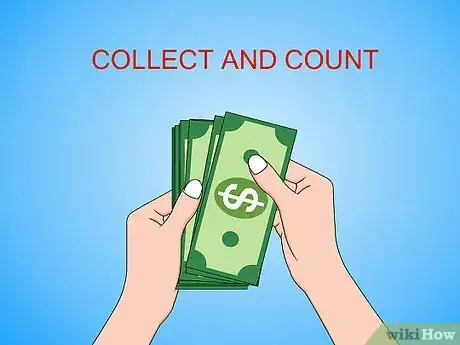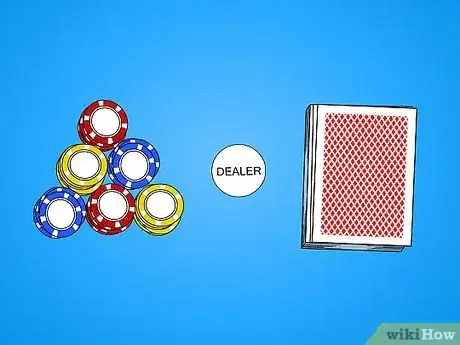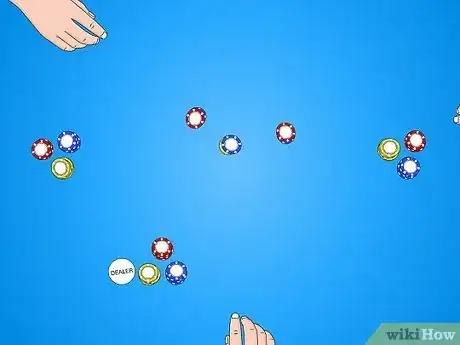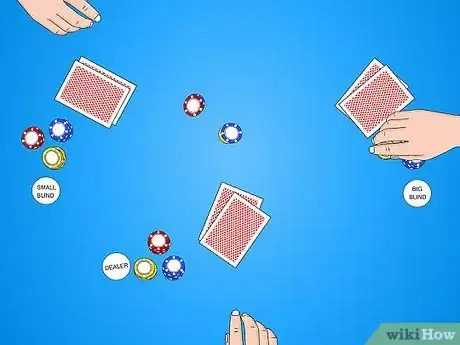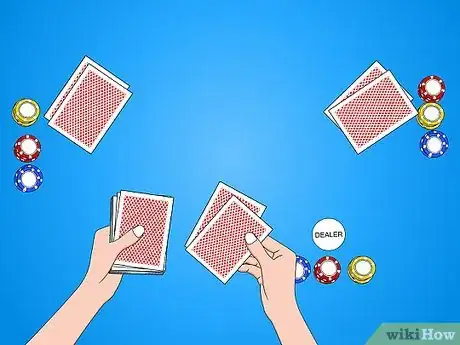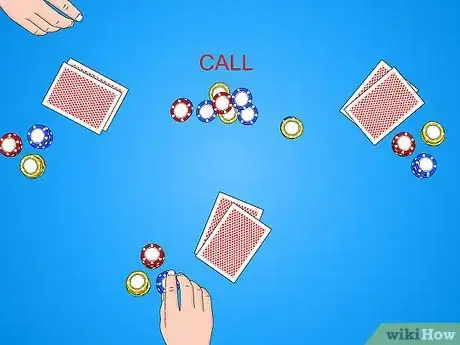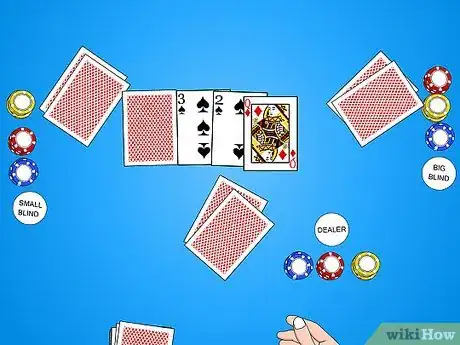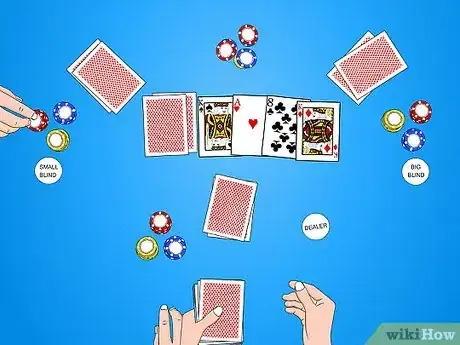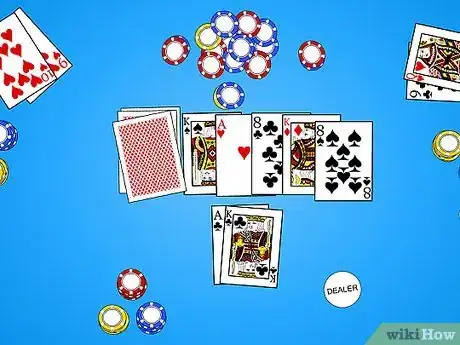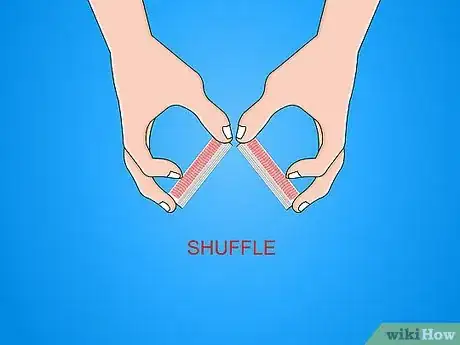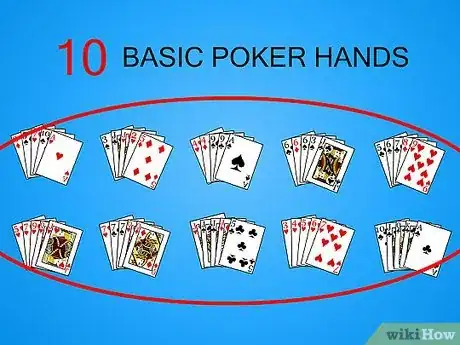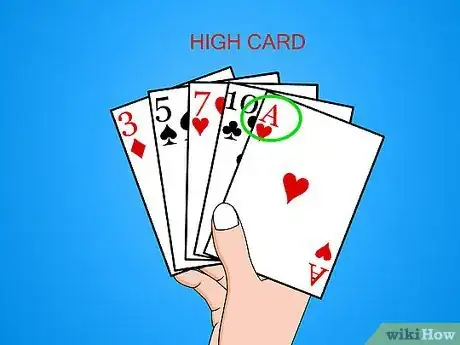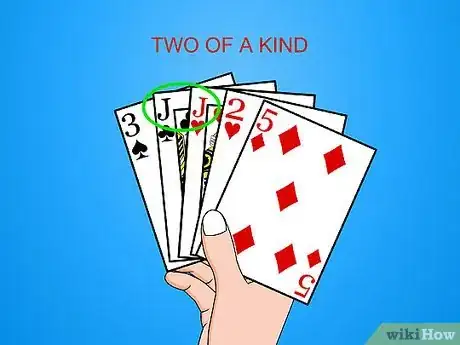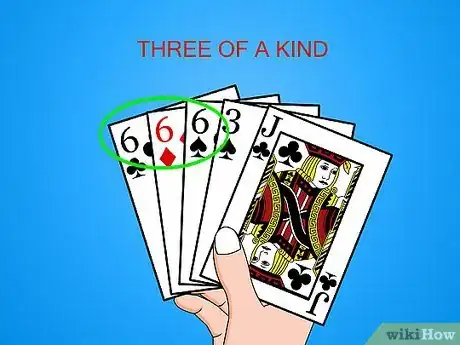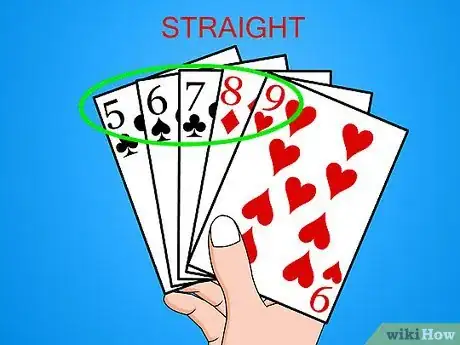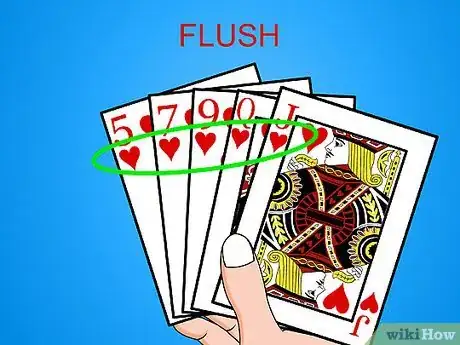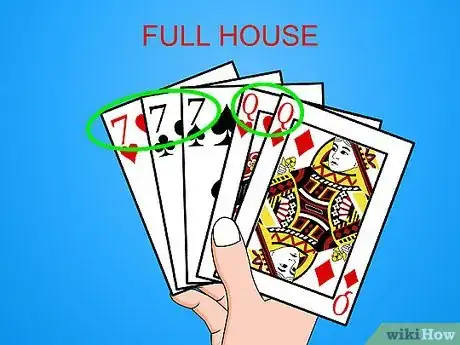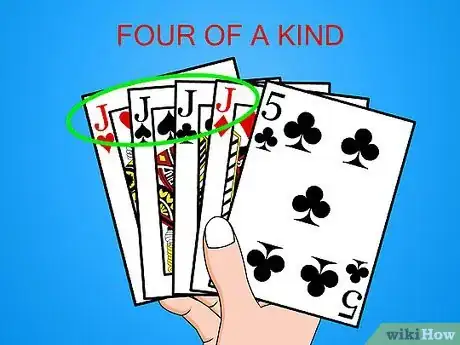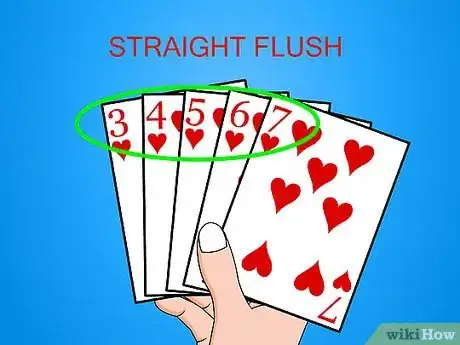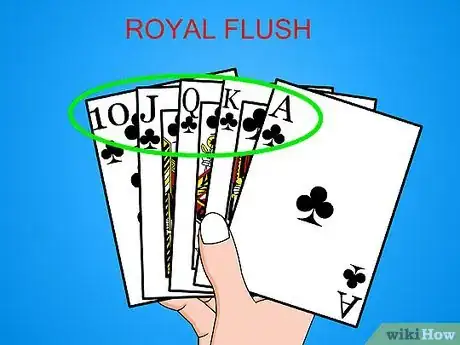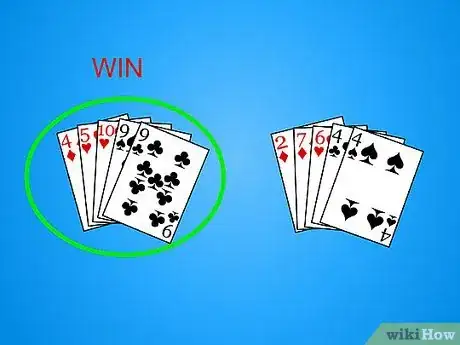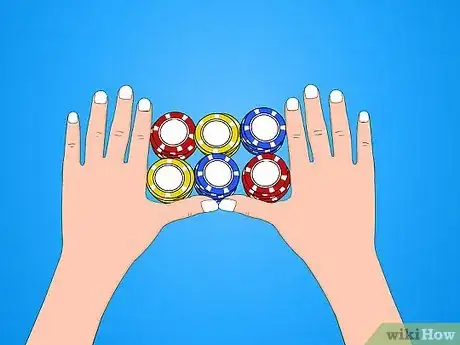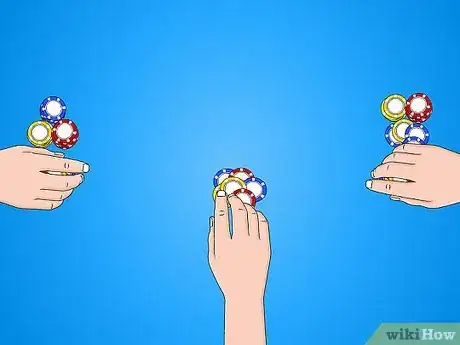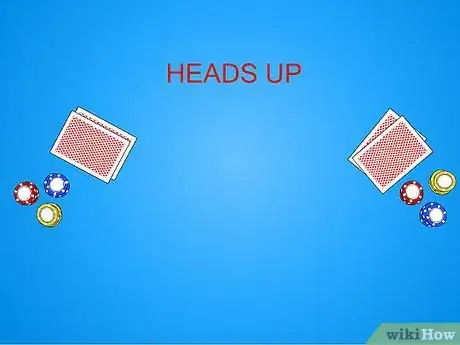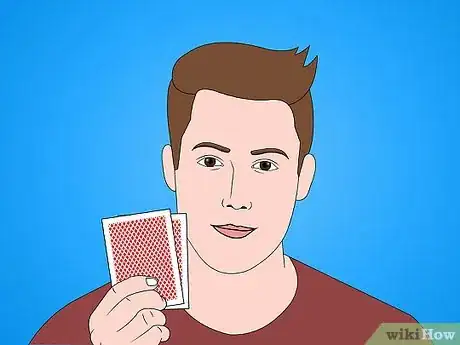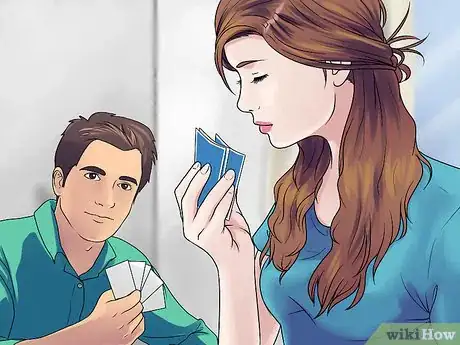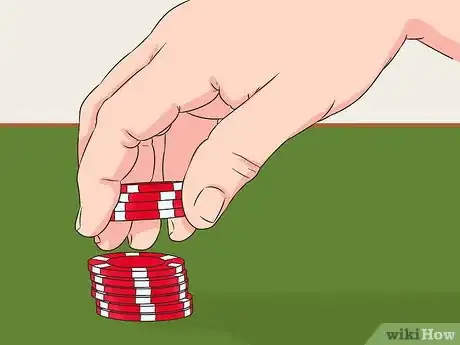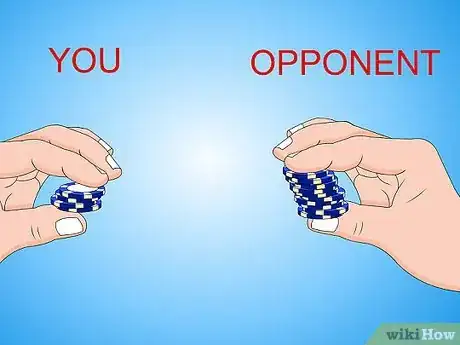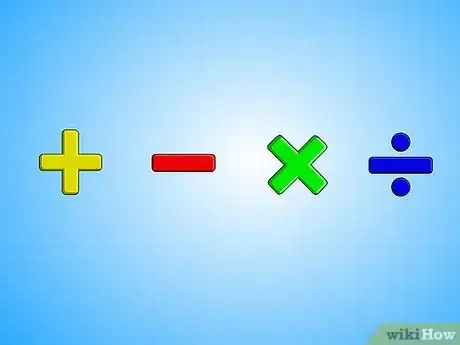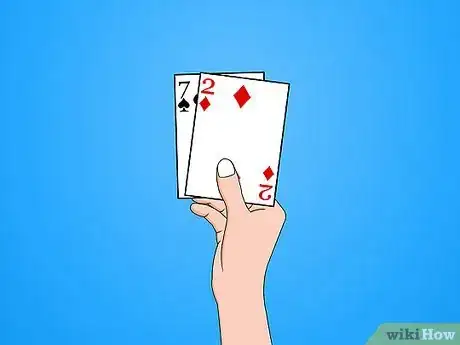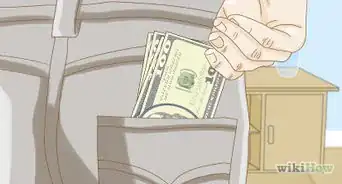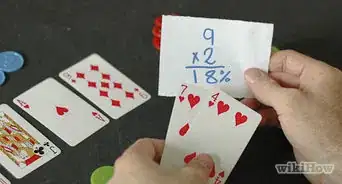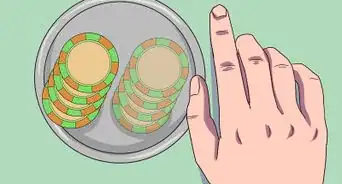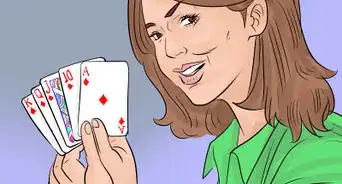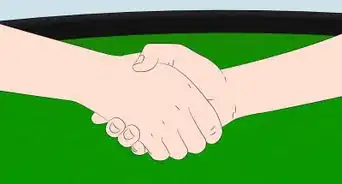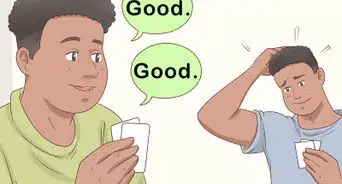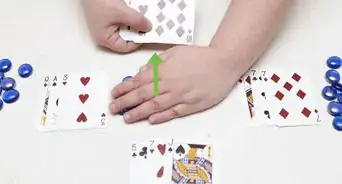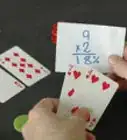wikiHow is a “wiki,” similar to Wikipedia, which means that many of our articles are co-written by multiple authors. To create this article, 70 people, some anonymous, worked to edit and improve it over time.
There are 21 references cited in this article, which can be found at the bottom of the page.
This article has been viewed 254,330 times.
Learn more...
All in, partner? Texas Hold'em is a popular kind of poker in which each player is dealt two hidden cards and hopes to combine this "hold" with 3 or 4 from the community pool of five dealt cards that are shared to make each player's best five card hand. Wagering, along with bluffing, is the largest part of the game, as players "raise the stakes" and choose whether to continue betting based on their odds of winning the pot as more of the community cards are revealed. Hold'em is the variation of poker most often played in casinos and in televised tournaments like the World Series of Poker. Lots of people go to play at casinos around the world and eventually end up playing poker for a living!
Steps
Playing a Hand
-
1Set up a bank. One trusted player, or an outside party, should collect and count the money, or whatever you are wagering, and exchange it for poker chips for each player. If you are not playing for money, still the bank should divvy out an equal number of chips to each player. There are a couple ways to organize your game from here.
- "No limit buy-in, winner takes all".[1] In this version, each player buys into the game with a set amount—perhaps $5 for a friendly game, hundreds or more for serious wagering. There is no limit on how many of their chips a player can bet at once—you can go "all in"—but when a player runs out he or she is out of the game unless allowed to buy back in for another share of chips just as new players can buy-in during the first 2 or 3 days of the tournament with hundreds playing, coming and going. In these tournaments players are usually eliminated one by one by leaving it all on the table until the last remaining player wins the whole pot. But, in some large tournaments, the last 10, 20,30,... or 100 to go out get an increasing take-home, up to the ultimate winner's set pay amount (not the amount of the table pot).
- "Limit, No Buy-in". In these games betting at each stage of the hand is not allowed to go all in, and also players can usually buy more chips at any time. This means that instead of playing the original chips until eliminated, players can wager until they are no longer willing to put up more money. Often, a player can "cash out" of the game to take their winnings or cut the losses at any time.
-
2Draw for which table you will be assigned. Sponsor can deal a card to each player to see who has high card to get to deal first. Give this person a token, called "The Button," and a clean, standard deck of 52 playing cards (no joker, no wild card).[2] The dealer shuffles the cards and always deals to his or her left, clockwise around the table to the button last. After each hand the button is passed to the left, and the job of dealing thus rotates around the table.Advertisement
-
3Ante up/"Pay to play". Have every player prime the pot—a small amount of money for the table/pot before dealing any cards. Using an ante is optional, but it keeps the pot motivating for everyone to try and makes sure pot size doesn't depend only upon the money wagered.[3]
-
4Put in the small and big blinds. The player to the left of the dealer for each hand is the small blind and must first put in half the decided minimum bet. The next player to the left of the small blind is the big blind, who puts in the full minimum. These bets are called "blinds" because they are placed before any cards are seen/dealt.[4]
-
5Deal each player two cards face down. Hand them out one at a time, starting to the dealer's left and ending with the dealer/button. Players can look at their own cards and should keep them secure and facedown. These are the "hole/hold" or "pocket" cards, and each player hopes their pair combines best with the community cards. Players are responsible for keeping their hole cards secret. If a player's hole cards are accidentally exposed or are mucked/folded, that player forfeits claims to any money already paid into the pot for that round.[5]
-
6Call, bet, raise, or fold based on your pocket cards. If they had to put in the ante, then each player can "check/tap", until someone "raises the ante" which then must be at least called. The betting round begins in earnest with the player to the left of the big blind, called the "action/under the gun" position. Starting with the player to the left of the big blind, each player must call (meet) or raise (increase) the current stakes to stay in the hand. If a player chooses to bet or raise, the next player must meet ("call") or raise that new bet, and so on. Raises must often be in increments of the minimum (big blind) bet. If a player does not wish to call or raise the current bet, he may fold by pushing his hold cards to the dealer into the muck/discards, quitting the pot and sitting out the rest of the hand. Betting goes around the table clockwise until every player has either folded or called or re-raised. If one player makes a bet none of the remaining players are willing to at least match, the hand ends and that player wins the pot without a showdown. He may muck his hand or choose to show either one or both of his hole cards (showing one or both cards when at least one is pretty good is a way of establishing or helping your reputation, "see, I play when I have good cards, see this [one]?").[6]
- When betting circles the table and returns to the small and big blind players, these players subtract the money they've already put in from the current call. Thus if no player had bet more than the minimum, the big blind has the "option" to either raise or stay in the game at no additional cost by checking. The small blind owes 1/2 of the minimum plus the amount needed to buy up to the call. If the minimum were $100, then the small blinds needs to pay in $50 to pay-in the minimum to the pot.
-
7Deal out "The Flop," three cards face up, placed where everyone can see. These are community cards that players still in the betting hope will combine favorably with their pocket cards.[7]
- Before dealing out the flop, or any subsequent cards, the dealer should discard, or "burn," the top card of the deck face down to lessen the ease of the dealer slipping a card on top for cheating purposes.
-
8Bet, check or fold again. The flop is followed by a second round of betting, this time without counting any players as the "blinds". Just bet normally starting with the player to the button's/dealer's left. Players are betting on the total of the two cards they have face down in front of them and the three community cards face up in front of the dealer.
- If no one has yet bet, players may "check" to pass without betting for now. If no one bets the game moves on, but if a bet is made as action goes around the table, then those that checked must bet/call the new stakes to stay in the hand.
-
9Deal the "The Turn" and have the third round of betting. The turn is the fourth community card dealt already turned face up by the dealer. Now players evaluate their chances based on their best five-card combination of their two secret/hidden hole cards with some or all these four community cards—with the knowledge that there is yet one more community card to see that might improve their hand. But, players without a significant draw/combination at this point should probably check/fold unless they hope to bluff their opponent(s) to fold/rather than to bet more into the pot. The bet amount may make it too expensive to "pay to see" the possible bluffer's hole cards. Then no one else knows whether it was a bluff or not, unless the winner chooses to show one card as a tease or downer, or to even show he or she "had real goods", if it was not purely a bluff.[8]
-
10Deal the last community card, "The River," and have a fourth and final round of betting. Since the river is the last card, players bet based on the best five-card hand in these seven total cards—this hand will not improve, so check/fold now unless you hope to bluff your opponents out of the pot. Again, if one player makes a bet the remaining players aren't willing to match, he or she wins without having to reveal his cards.[9]
-
11Reveal your hands for "the showdown." Assuming there are at least two players who haven't folded by the end of the last round of betting, the remaining players flip over their two pocket cards, starting with the last player to bet and going clockwise. A player who tried to bluff, got called, and knows he is beat may simply muck his hand and forfeit the pot. Each player announces his five card hand. The player with the highest hand wins the pot (the total sum of all chips bet on this hand).[10]
-
12Rotate the button, shuffle the deck and play again. Hold'em poker usually continues until most of the players have been knocked out or quit and either a single winner has all the chips or the remaining players choose to split the pot proportional to how much each has won.
Understanding Poker Hands
-
1Understand the ten basic poker hands. Poker is based on assigning ranked value to different combinations of cards. The hand with the rarest combination wins. Below are the different standard poker hands from lowest to highest.[11]
-
2High Card. Not a made hand, so its value is based on the highest card, then the next highest, on down, comparing to other hands, and so it can tie/win when no one has a better hand. Two is the lowest and Ace is the highest.
-
3Pair (Two of a Kind). Two of the same value card. Example: 3(♠) - J(♣) - J(♥) - 2(♥) - 5(♦) is a pair of Jacks.
-
4Two Pairs. Two groups of two of the same value card. Example: 4(♥) - 4(♦) - 9(♠) - 9(♣) - A(♠) is "two pairs, 9's and 4's", "nines and fours up".
-
5Three of a Kind. Three of the same value cards (a set). Example: 6(♣) - 6(♦) - 6(♠) - 3(♠) - J(♣) is three 6's, "trip sixes", "a set of sixes".
-
6Straight. Five cards running in order "off suit". Example: 5(♣) - 6(♠) - 7(♣) - 8(♦) - 9(♥) is the "9-high-straight".
-
7Flush. Five cards "suited" (all the same suit). Example: 5(♥) - 7(♥) - 9(♥) - J(♥) - Q(♥) is a "queen-high-flush".
-
8Full House. Three of a kind and a pair. Example: 7(♥) - 7(♣) - 7(♠) - Q(♥) - Q(♦) is "full house 7's and queens".
-
9Four of a Kind. 4 cards all with the same value. Example: J(♥) - J(♠) - J(♣) - J(♦) - 5(♣) is "four jacks."
-
10Straight Flush. The highest possible hand in poker. All cards are suited (of the same suit). Example: 3(♥) - 4(♥) - 5(♥) - 6(♥) - 7(♥) is the "7-high-straight-flush".
-
11Royal Flush - The highest straight flush, ace, king, queen, jack and ten. Example: 10(♣) - J(♣) - Q(♣) - K(♣) - A(♣) is the "ace-high-straight-flush."
-
12Compare equally valued hands. If you have two players at the showdown each with the same type of hand, the winner is determined by whose version is higher in number. Here's how this rule plays out:
- A pair of 9's beats a pair of 4's.
- Two pair, Jack's and 2's, beats two pair, 7's and 5's.
- A straight that runs as high as Queen beats a straight that only runs up to 10.
- An Ace-high-flush beats a King-high-flush.
- If hands have combinations of the same value, the hand with the highest extra card wins. For example a pair of 8's with an Ace-high remainder ("kicker") beats a pair of 8's with a 10-high. If both had the Ace kicker then you proceed to the next highest card in each hand. Kickers are very important in hold'em. If your opponent opened the pot with AK and you call with KQ, then a king comes on the flop, the pair of kings will likely make you bet higher, but now he has the Ace kicker...
Being Aware of Corner Cases
-
1Going "all-in." If you are very confident your hand will win, or you believe no other player will be willing to match you, you can push all your chips on the line—a bold move.
- In a tournament, if "you're down to only 5 more big blinds/antes" then you'll be out after 5 rounds around the table if you don't make a stand, so you will want to go all-in pre-flop with a reasonably good hand, hoping to double up or get everyone to fold. If you have only 5 times the blinds and antes, just picking up the blinds and antes means a 20 percent increase for you, which is huge. So, for example, if you have any pair, any ace, any king, or any two face cards, strongly consider going all-in pre-flop -- if no one has yet entered the pot.
- You are "short-stacked" compared to other players and to the blinds/antes. If making any reasonably sized bet will put half or more of your stack into the pot, you are pot-committed and may as well go all-in to look stronger and apply maximum pressure. Even if you have the nuts (the best possible flop with your hold cards), don't try to slow-bet and raise just the minimum if you are already pot-committed. Any opponent with the slightest bit of observation will become suspicious why you did not simply go all-in, if you are strong. In any case, your opponents are likely to interpret an all-in from a short stack as a desperate move and call if any of them have a reasonably good hand.
- If you have enough more chips than an opponent who has a wager on the table, you may "put him or her all in" by betting equal to their total chips (you can say "all-in"). If no other player calls and the shorter stack doesn't fold, both reveal their cards in the showdown -- then any remaining community cards are dealt out one by one without any more wagering on each (because the all-in player has no more chips to bet with). If the other person wins you double that player up, but you have a chance to send that player home.
-
2Making side pots. If one player is all in, players who call that and still have more chips can still make additional bets with each other. This is called a "side pot." Set aside one pot equal to the bets made up to each remaining player each calling the "all-in." This first match up is what the original all-in player can win. The remaining players can bet against each other into a separate pot, saying "okay I'll raise you [maybe even putting you all in, unless you fold to limit your additioanl exposure]". At the showdown the main pot goes to the player with the best hand, and the side pot (or pots) go to best hand amongst the players who contributed to that, and one "or more" go home, if the wagers put you and/or others all-in as well.[12]
- If you have a reasonably good hand, say AQ, and a short-stack in front of you has pushed all-in, probably as a semi-/pure-bluff, you could also raise all-in yourself as an isolation play, as few players will call a raise and a re-raise in front of them without a very good hand like QQ or better. Your move will help you isolate the short-stack who likely would make the all-in with a weaker hand than you have.
- If one player is already all-in and there is no money in the side pot yet, be inclined to just check unless your hand improves, because without any side pot money to play for, it doesn't make sense to try to bluff out others and increase the odds of winning for the all-in player. Checking the hand down maximizes the probability of eliminating the short-stack who is already all-in. This is known as cooperation play.
-
3Playing "heads-up." The order of betting is slightly different when playing with only one other player, "one-on-one". The player with the dealer button posts the small blind and his or her opponent is the big blind. Then they alternate, getting the button, so the new small blind (button) is the first to wager in the betting rounds for each new hand. Preflop hand requirement is a lot less stringent. Almost any two cards is worth playing, and an ace is a monster.[13]
Mastering Strategy
-
1Bluff. Bluffing involves pretending your cards are better than they are, but don't say what your cards are, and making aggressive bets to force out all the other players—thus winning the pot with a poor or mediocre hand. Bluffing is risky, however, since you never know when an opponent might have a strong enough hand to call you all the way to the showdown.[14]
-
2Semi-Bluff. If you have a draw to a likely winning hand, say you have AK of spades and there are also two spades on the board, you may want to bet or raise and draw to a flush/made hand. Semi-bluff tends to be a higher percentage play than a pure [nothing] bluff, by giving you two or more ways to win the pot. (1) Your opponents may fold to your bet on the flop, or (2) they may call but you could bet again to win on the turn card (although this may not fold anyone, seeming like a continuation bet) or (3) you actually hit your draw on the turn or the river and bet again (that's costly, but not as sudden/big as all in).[15]
-
3Slow-play especially on your monster hands. If you flop a monster/the nuts (the best possible flop with your hold cards) or at least trips, just check and call any bets to induce a bluff since you seem weak, or on the bad side, you may let your opponents catch a card on the turn or river. Slow-playing works best with loose aggressive players that you hope will try to bluff when no one has bet/as if they have nothing. If you flop a full house and bet out, everyone folds and you only win a small pot. So just check and let others lead out, as you try to catch a card on 4th or 5th street. Be careful, though, that you don't slow-play and get many opponents checking to see draws. For example, if you hold T(♥) - T(♠), and the flop comes T(♣) - 9(♦) - 3(♣) for "trips T's", and you now have three or more opponents in the pot. Do not slow play your set/trips, especially if you raised pre-flop and are known to make continuation bets. Bet "a third of the pot" to make the flush draws and straight draws fold or pay to see the next card.
-
4Win by intimidation -- not Most Popular. Psyche the other players, within the rules of a tournament. Keep quizzing earlier position players face up and theorizing about their hand while betting against them, without violating rules. Bragging about hitting the nuts, coconuts, monkey nuts is silly but boggles their minds. Over-talk, over-analyze how you might bet, how they may be "strategizing", what they hold -- while watching the reactions of each of the betters who are in the pot ahead of you.[16]
- Remark without delaying play when one loses to you on a showdown, "how could you bet on Jack, ten?" and stuff like, "Why would you waste your time and money on Queen-high, awe, oh man..." Don't expect answers, but don't interfere with actual play. Ask about any sort of legitimate issue. Ask about every aspect of their game only as you face each person, on each and every round, as you are apparently deciding how much to bet or whether to fold. Especially against shorter stacks, never-ending but seemingly sensible questions while you decide. "You want me to bet? Or, do you want me to fold?" so then "If you want we to bet, I might have to fold. Honestly, what do you want -- me to do, fold? Yeah, fold? Fold right..." Then your opponent folds with a much better hand, than you... and you only show your low card. Steam will come out of the folder's ears. You put your opponent on tilt.
- Take "forever" to fold, being careful, then say, "I think you got the nuts, right? So, you have queen or better, okay, I fold." If that feels right, and you are not already all-in... "Every time you play your hand the way you would, if you could see your opponents' cards, you gain, and every time your opponents play their cards differently from the way they would play them, if they could see your cards, you gain." , per David Sklansky author, considered an expert on gambling. Which is like "Play to 'what the opponent most likely holds from their time/position/size of bet and based on past pattern of play,' and get the other to play to 'whatever you suggest that you have and know what they have by your chatter and leading questions while you were deciding how to bet.' " -- then the opponent quite often folds the better hand because you've put so many confusing/spinning thoughts in his/her mind (tilt!).
-
5Get into the mind of your immediate opponent, heated to distraction. Don't expect many answers. Ask for various counts: "So, how much is your stack?" "I may just put you all in!" "I'll show you my hand at the end, okay." then say "if you show me yours, I'll show you mine"... "Do want me to count my stack; well, (taking some time) I have about ___." Be serious, "I need to know ____" asking "how much is in the pot?", "how much is the current bet"", etc. -- anything theoretically worth knowing. As if you don't know. "Hey, so you have a bottom pair. No, it's top pair." "Now, I think you're on a queen... Yeah, yeah, you do have a face card. You do, right?" You can say such guesses, and ask about your guess, about their hold; now, change your mind; guess again, etc. Get the table hot, angry or exasperated, so they may over-bet on weak hands to try to get back at you. But they end up folding or losing hands, stuttering, muttering and confused.[17]
- Tone it down to be less hated. Don't talk while they are deciding what to bet or to fold. Be, "Mr. Nice Guy" in words. Say, "Nice hand!" even if you win it. Say, "good player, nice round", but not letting up on the quiz.
-
6Check-raise. If you have a reasonably good hand, but not a monster (in early position like the one under the gun or the next player), say you have top pair (paired the top card on the board), and top kicker (strong kicker) after the flop, you probably have the best hand. You could bet out in front, but everyone might fold and you don't win more money than what's already in the pot pre-flop. Alternatively, check early, and hope that someone else bets later so you can see who has something. Then when it comes back to you to make the call, raise instead! Now if your opponent bet with something like middle pair, he will likely fold here and you win an extra bet. If you get called or re-raised, you need to consider folding if facing a [strong] tight-player. When you don't have a hand, the check-raise bluff works best against a weak tight player (playing weak). The check-raise bluff is a high risk play because you may seem weak and not scare the opponent, so you probably want to have seen that opponent fold to someone's raise before you attempt this ploy against him especially with a draw or weak made hand.[18]
-
7Read your opponents. Poker isn't just a game of chance—it's a game of psychology. Watch your opponents carefully for "tells"—involuntary ticks of body language that reveal when a player is either bluffing/or holding a good hand. Also learn your opponent's attitudes and habits. You don't want to try to bluff against someone who will call every time; on the other hand, you don't want to slow-play someone who only bets with the nuts.[19]
-
8Juice the pot. If you have a hand you are positive is going to win, you want to get other players to bet as much as possible. To do this, don't bet too aggressively but slow-play it. Thus, make your raises incrementally to string the other players along. Don't go all-in; let your opponent go all-in.[20]
-
9Do the math. Poker is also a game of statistics. If you can, calculate the chances that the next card or cards will be one of the "outs" that makes your weak hand a winning one—or that makes your opponent's potential hand one that beats yours. A good rule of thumb is that the probability of catching your draw with two cards to come is equal to 4 times the number of outs, minus the number of outs in excess of eight. For example, if you have 9 outs (e.g. flush draw on the flop), you have 4*9-(9-8)=35% chance of making your hand, or slightly better than 2:1 odds against. So if you are offered 2:1 odds or better, you should call; otherwise, fold. Don't bet when the odds are far against you like you need to draw two running cards, or draw to inside straight, or on a showdown where you need only one certain card on the river.
-
10Fold often. If your pocket cards are notably bad (2-7 off suit is considered the worst hand) or if you have no notable combinations after the flop, just fold immediately if drawing dead on the flop. Realistically you should only be playing about one hand in four, and the more players in the game the more conservatively you should play. If you've seen a poker game on TV, it can seem like the pros are playing every hand, but that's the magic of television—they may not show several hands where all or a vast majority of players fold immediately. At a full table, many players will fold immediately (without even seeing the flop) unless they have a pair, suited-connectors, or AJ or better as reasons to see the flop.[21]
-
11Manage your bankroll.[22] For serious poker players, keeping a well-tended bankroll allows you to survive the ups and downs of the game without going broke. Start your poker session with a specific bankroll and decide how much you are willing to lose. It is recommended in Texas Hold'em to have a bankroll of 10 times the buy in amount for a game.
Community Q&A
-
QuestionWhat does pot odds mean?
 Community AnswerThe pot odds are how likely or unlikely it is that you will win with your hand.
Community AnswerThe pot odds are how likely or unlikely it is that you will win with your hand. -
QuestionCan I fold anytime during the game?
 Community AnswerYes, pre-flop, flop, turn, river. If you at any point realize this is just not going to be your hand, it's best to fold.
Community AnswerYes, pre-flop, flop, turn, river. If you at any point realize this is just not going to be your hand, it's best to fold. -
QuestionWhen cutting the cards, how many cards are allowed to be cut?
 Community AnswerWhen cutting the deck before a deal, there is no minimum or maximum for how many cards you can cut.
Community AnswerWhen cutting the deck before a deal, there is no minimum or maximum for how many cards you can cut.
Things You'll Need
- 2 - 10 players.
- One 52 card standard deck of cards (remove the jokers).
- Poker chips, usually 1's, 5's, 25's, and 100's.
Warnings
- Gambling can be a highly addictive activity. Be careful not to bet more than you can afford, and don't let gambling take priority over your career or loved ones.⧼thumbs_response⧽
- Gambling is also strictly regulated in many states, and often restricted to authorized casinos. That means a friendly game of poker with your friends may technically be illegal if you use real money. If you are worried about the law, play for candy, help with chores, or just for fun.⧼thumbs_response⧽
References
- ↑ https://www.pokernews.com/poker-rules/texas-holdem.htm
- ↑ https://www.texasholdem-king.com/poker-terms/the-button/
- ↑ https://www.poker-king.com/dictionary/ante-up/
- ↑ https://www.pokerlistings.com/poker-rules-texas-holdem
- ↑ https://www.cardplayer.com/rules-of-poker/how-to-play-poker/games/texas-holdem
- ↑ https://www.pokerlistings.com/texas-holdem-betting-rules
- ↑ https://www.pokernews.com/poker-rules/texas-holdem.htm
- ↑ https://www.pokerlistings.com/poker-rules-texas-holdem
- ↑ https://www.pokernews.com/poker-rules/texas-holdem.htm#final
- ↑ https://www.pokernews.com/strategy/the-showdown-rules-procedures-and-etiquette-19237.htm
- ↑ https://www.cardplayer.com/rules-of-poker/hand-rankings
- ↑ https://www.pokerlistings.com/rules-for-poker-all-in-situations-poker-side-pot-calculator
- ↑ https://www.pokerlistings.com/strategy/headsup-part-1-the-cards-you-play
- ↑ http://www.pokerology.com/lessons/bluffing-in-poker/
- ↑ https://www.pokerlistings.com/10-essential-texas-hold-em-moves-the-semi-bluff
- ↑ https://www.pokernews.com/strategy/intimidate-and-confuse-your-opponents-by-folding-fast-29321.htm
- ↑ http://www.pokerology.com/lessons/psychology-and-poker/
- ↑ https://www.pokerlistings.com/10-essential-texas-hold-em-moves-the-check-raise
- ↑ https://www.pokerlistings.com/10-essential-texas-hold-em-moves-the-soul-read
- ↑ https://www.pokerlistings.com/strategy/psychology/juicing-a-table
- ↑ https://www.gamblingsites.org/poker/texas-holdem/when-to-fold/
- ↑ https://www.pokernews.com/strategy/an-introduction-to-bankroll-management-19610.htm
- http://boardgames.about.com/cs/poker/a/texas_rules.htm
About This Article
Texas hold’em is a competitive card game designed for 2-10 players. The goal of the game is to win all of your opponents’ chips, although at a casino you can cash out at any point. To win chips, your goal is to win as many hands as you can by creating the best 5-card hand using your 2 hole cards, and the 5 community cards. While people who enjoy Texas hold’em typically enjoy gambling, you can play casually with your friends using chips or tokens with no monetary value if you prefer. You can also just play with coins or paper money to streamline things. There are a lot of different rule sets and minor variations from format to format, but in general, play begins after chips are distributed and the value of chips is determined. Every player starts with the same amount of chips unless you’re buying in at a casino. To start, shuffle the cards (minus the jokers) and deal two cards to each player. If you’re playing at a casino or official tournament, players may need to pay an ante, small blind, or big blind first depending on the rules. The two cards you’re dealt are your hole cards, and each player is allowed to look at them at any time. Once each player has looked at their cards, the first round of betting begins. Betting takes place clockwise, and a player may fold, bet, or check. Folding involves throwing your cards back to the dealer and calling it quits for the round, and checking means that you’re not placing a bet but are passing to the next player. When any player bets, each subsequent betting player must either fold or match the bet—you cannot check with an outstanding bet on the table. They can also raise a bet, and betting continues until every player has bet the same value or folded. If every player checks, the betting round also ends. Then, the dealer flips 3 cards from the deck face-up. This is called the flop, and these community cards may be used by every player at the table. Another round of betting ensues, and then the dealer reveals the fourth community card, called the turn. Players spend another round betting and then the dealer reveals the river card, which is the fifth and final community card. Here, players assess their hands to see what kind of 5-card hand they can make with their two hole cards. The value of each of the 10 potential combinations is different, and in order from least to most valuable, they are: high card, two of a kind, two pairs, three of a kind, straight, flush, full house, four of a kind, straight flush, and royal flush. Once the last round of betting is over, the player who took the last betting action reveals their cards first. Other players then either reveal their cards, or turn them in to hide the information and give up the showdown. The player with the best hand takes the pot. If two or more players have an identical hand, the pot is split. If two players have hands with a similar value, the player with the highest card in the set wins. Once the round ends, the dealer shuffles the cards and a new round begins. Play continues until one player has all of the chips, all but one player quits, or you cash out and take your chips off the table. For tips on the various poker hands you can win with, read on!
